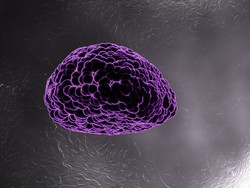Mechanisms of cancer-related drug resistance
Accumulating evidence indicates that apart from genetic mutations, cancers harbour complex aberrations of the epigenetic landscape. Pharmacological targeting of chromatin regulators can reverse these aberrations, and promising results have emerged from clinical trials. Recent evidence on the targeting of the 'Bromodomain and extraterminal domain' (BET) containing protein 4 (BRD4) - a reader of histone-acetyl marks - indicates the therapeutic value of this approach. However, pre-clinical data from 'Acute myeloid leukaemia' (AML) indicate the emergence of resistance against BRD4 through yet unknown mechanisms. The EU-funded BET(TER) TARGETS (Targeting BET bromodomains in cancer – mechanisms of sensitivity and resistance) project set out to investigate the mechanism underlying the observed resistance to BET inhibition. For this purpose, they combined advanced RNAi technologies, experimentally tractable AML mouse models, and comprehensive profiling (proteomic, transcriptional, epigenetic) of sensitive and resistant cells. The ultimate goal was to identify and characterise the molecular determinants of the sensitivity and resistance to BET inhibition. Scientists analysed the composition of BRD4 complexes via quantitative mass spectrometry in sensitive and resistant AML cells. They identified a plethora of nuclear proteins that clearly illustrated the complexity of the pathway. Through an alternative approach, they performed dynamic RNA sequencing in sensitive and resistant leukaemia cells with or without BET inhibition. Significantly, they discovered a gene set that is differentially expressed between sensitive and resistant cells. Project findings suggested that BET inhibition triggers acute repression of MYC in human leukaemia regardless of their sensitivity profile. Resistant cells restore MYC transcription through the activation of the Wnt pathway, rapidly overcoming the effect of BET inhibition. Further work on the mechanism of BRD4-dependent transcription in sensitive and resistant AML cells unveiled a role for histone-modifying proteins in chromatin remodelling around the regulatory pathways that restore the transcription of key BRD4 targets. Overall, the BET(TER) TARGETS study validated Wnt signalling as a driver and candidate biomarker of BET inhibitor resistance in leukaemia. Apart from therapeutic implications, the results of the project highlight the heterogeneity and plasticity of transcriptional machinery in determining the outcome of chromatin-targeted therapies.
Keywords
Cancer, drug, resistance, epigenetic modifications, BET, BRD4, AML







